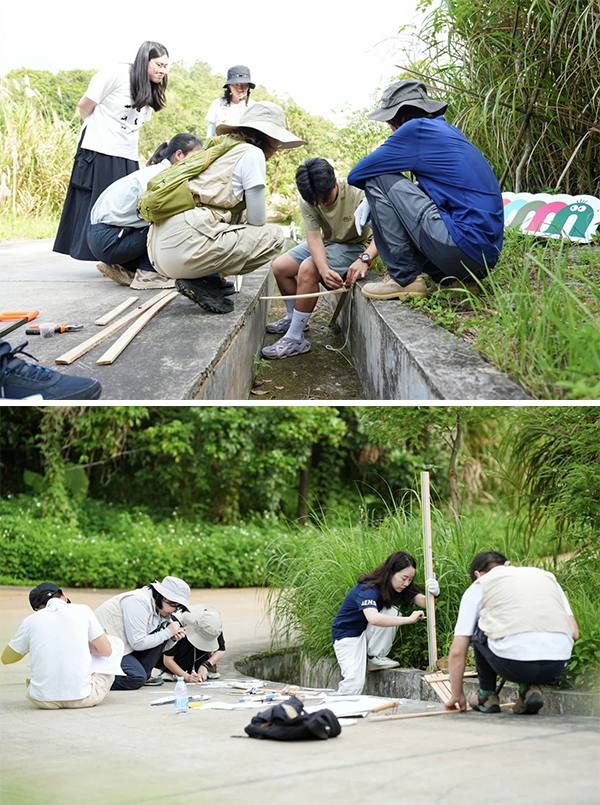 Local News
Local News
The Linking Plan volunteers build "bridges" in Jingui Village in Pingshan District on May 11. Photos from the organizers
The Linking Plan, a comprehensive initiative aimed at ecological restoration and environmental enhancement, has recently been initiated in Pingshan, heralding a series of upcoming activities.
Spearheaded by the Ecology and Environment Bureau of Shenzhen Municipality’s Pingshan Administration Bureau, this plan strives to foster biodiversity through collaborative efforts from the public to develop Shenzhen’s Mountain-Sea Vistas.
The plan is based on numerous surveys that have identified various micro barriers throughout the city, including drainage ditches, water-collection wells, sand retention ponds, dams, embankments, irrigation channels, roads, and other human-made structures, which can encroach on wildlife habitats and impede animals' movements, leading to entrapment.
Prioritizing the specific needs of animals, the plan emphasizes microhabitat preservation and enhancement, as well as the rescue of trapped wildlife. Microhabitats, being distinct areas that diverge from their surrounding ecosystems, can support unique species not typically found in the broader region.
Tailored strategies for ecological rejuvenation and environmental improvement are underway, urging society at large to construct small, easily implementable facilities to reduce human interference with local wildlife, providing a safer, more convenient, and harmonious living environment.
The inaugural "Bridge 001," constructed May 11 by a group of volunteers, consists of three small bridges installed in drainage ditches in Jingui Village, Pingshan District, designed to prevent small animals from becoming trapped.

The inaugural "Bridge 001," constructed May 11 by a volunteer group, consists of three small bridges installed in drainage ditches in Jingui Village, Pingshan District.
Nan Zhaoxu, a local researcher focusing on nature and history, shared insights on Shenzhen's biodiversity and ecosystem at the launch event of the Linking Plan on May 18. He said that Shenzhen has seen rapid growth over the past 45 years in economic development, population, technology, and innovation, and its biodiversity also thrives within this bustling metropolis. "Bridges can connect all beings. I encourage everyone to participate in this project, even if it is a short bridge," he expressed.
Li Cheng, project director of the Xizijiang Ecological Conservation Center, underscored the significance and feasibility of establishing wildlife-friendly pathways through illustrative cases, urging people to engage in this endeavor. He noted sightings of long-tailed gorals in east Huizhou, suggesting the possibility of their previous presence in Shenzhen. The historical connection between mountains in east Shenzhen and east Huizhou, now severed due to urbanization, could potentially be restored through the construction of more "bridges," potentially facilitating the return of wildlife species previously inhabiting Shenzhen.
Zhang Junxin, responsible for ecological maintenance at OCT Wetland Park, elaborated on the park's animal-friendly amenities, highlighting its importance as a refuge for migratory birds like black-faced spoonbills. The strict construction regulations around Shenzhen Bay have safeguarded the ecosystem, providing crucial ecological corridors for these migratory birds.
Zhao Zhenye, an expert in carbon peaking and neutrality, emphasized the pivotal role of plants in achieving carbon neutrality. He advocated for leveraging natural ecological settings to establish these "bridges" rather than relying on human interventions.